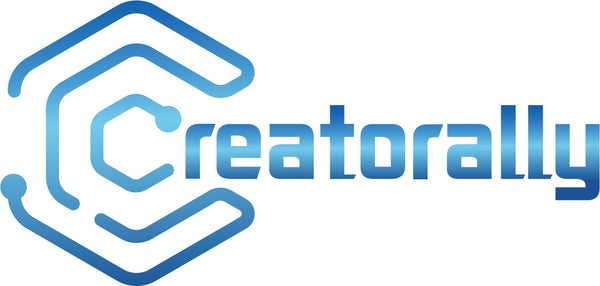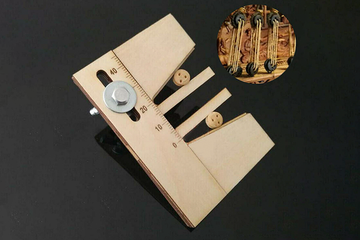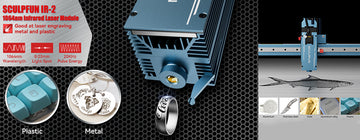Not bad, quite helpful! I’ve been using wood all along, but I’ll give other materials a try in the future.
Materials for laser cutting
Perhaps in your daily life, as you have strolled down a bustling street or admired a wide range of decorative items in your home, have you ever noticed that many of these items may have actually been created using a laser cutter? It may seem a little strange to you because we usually associate laser cutting with materials such as wood or metal, but in fact, this technology can cover a much wider range of materials than you might think. In this article, we're going to explore the materials that can be used with a laser cutting machine, taking you on a tour of this amazingly versatile process.
Before we start the article, the first thing we need to figure out is the concept of laser cutting. It's not just a technique that uses a laser beam to cut and separate the material in its entirety, but depending on the speed and power settings, it can also be used to mark and engrave on different materials. Additionally, different types of laser cutters are suitable for different materials, so choosing a compatible laser cutter is crucial. Different materials react to laser beams in distinct ways; some are safe and easy to work with, while others may produce toxic gases or melt during the laser process. Therefore, we hope that this article will help you to make the right choice of materials suitable for laser cutting.
Materials can be cut or engraved with a laser:
1. Wood
The first material to introduce is wood. Wood is a versatile material that is easy to work with and comes in a variety of types such as hardwood, softwood, plywood, and MDF, just to name a few. It is important to realize that wood is more accessible to laser settings and is cost-effective, so it is perfect for beginners.
There are two simple categories to understand about what can be made from wood. One is simple small products, including daily life wooden jewelry, tableware, kitchenware, key chains, desktop accessories, unique signs, etc.; the other is relatively complex large products with more consumables, such as wooden furniture, stage backdrops, exhibition displays, sports equipment and so on.

2. Paper
The second material is paper, including cardstock and cardboard. Although it may sound a bit unusual, paper can be laser cut and even engraved. Paper is a very commonly used material and there are countless products that have been engraved with paper. Unleash your imagination, candy wrappers, holiday cards, children's toys, bookmarks, teaching aids, invitations, boxes, and a wide variety of other objects waiting to be made.

3. Acrylic
The following is acrylic. Acrylic, or plexi, is a common and popular material because it is smooth and appears transparent or non-transparent. You can choose from a variety of colors depending on your needs. With a laser cutter, you can make special and impressive items such as name tags, trophy awards, earrings, stencils, cake toppers, customized gifts, organizers, signage, and more.

4. Leather
Leather is one of the basic materials for laser cutting, although it may produce a strong odor when cut. As a elegant cutting material, it is suitable for items such as keychains, wallets, bracelets, belts, dog collars, drink holders, journal covers, guitar straps, watch bands and so on.

5. Rubber
Rubber is a versatile laser cutting material. It is widely used due to its unique properties. It is basically an elastic polymer that comes in sheets, rolls or even stamps. Examples of items that can be made using rubber: stamps, prototyping, custom gaskets, rubber insulators. Laser cut rubber offers a precise, efficient and clean way to mold the material into a variety of forms, making it suitable for both industrial and creative applications.

6. Textile
Textiles as a broad classification covers fabrics, cotton, nylon, polyester and silk. It is suitable for a wide range of creative and practical projects. Laser cutting can cut textiles precisely without causing creases or tears in the material. It can be used to create customized clothing, fashion accessories and fabric artwork to make garments more unique; and home decor such as curtains, cushions, tablecloths and napkins to enhance the beauty of interiors.

7. Glass
In addition to the materials mentioned above, another material commonly used for laser engraving is glass. Although glass is not as flexible as other materials when it comes to cutting, it is excellent for surface engraving. You can use laser technology to make unique gifts or decorations by adding a variety of designs, text, or patterns to the glass. This engraving technique is often used on items such as wine glasses, bottles, mirrors and windows. Whether it's a personalized gift or for commercial use, laser engraved glass can deliver beautiful results and make glassware more attractive.

8. Metal
When it comes to materials like metal, it's important to note that different types of laser engravers perform differently in cutting and engraving on metal. Most lasers, cannot engrave on bare metal. However, this does not affect the results that can be achieved with metal. Custom pens, keychains, metal business cards, metal jewelry, mechanical parts, modeling and toy making are just a few of the possibilities.

9. Stone
Common stones, such as those found on the beach, can be used for laser engraving. You can't cut the stones, but you can create fun personalized garden stones or decorations.

Materials that should not be cut or engraved with a laser:
Knowing the wide range of materials that can be cut and engraved with a laser cutter, what we also need to keep in mind is which materials should never be cut and engraved using a laser. Be sure to avoid these materials as they can catch fire and release noxious gases/smoke, as well as damage the machine.
These materials include (but are not limited to)
1.Leather and artificial leather containing chromium (VI): Chromium (VI) is a hazardous substance which can be released during laser cutting and is harmful to human health.
2.Carbon fiber (carbon): Carbon fiber is extremely heat-resistant and hard, so lasers are usually unable to cut or engrave it effectively.
3.Polyvinyl chloride (PVC): PVC releases harmful chlorine gas during laser processing, which is unsafe for equipment and operators.
4.Polyvinyl butyral (PVB): PVB materials are often difficult to cut with lasers because it produces uneven cutting edges.
5.acrylonitrile butadiene styrene(ABS): If cut by laser, it will produce gas and this poisonous gas can cause death if the concentration is high.
6.Polytetrafluoroethylene (PTFE/Teflon): PTFE is very heat-resistant and is often difficult to cut and engrave with a laser, as well as producing toxic gases during processing.
7.Beryllium oxide: Beryllium Oxide releases harmful dust and vapors during laser processing that are hazardous to health.
8.Any material containing halogens (fluorine, chlorine, bromine, iodine and astatine), epoxy or phenolic resins: These materials can produce harmful gases when laser processed and are often poorly cut and engraved.
It turns out that we are surrounded by various items created by laser cutter, from a greeting card to exhibition display. The materials that can be used for engraving and cutting are so wide-ranging, from a piece of paper to metal. You can grab the available materials around you and start working on your creation, but make sure you have clear knowledge related to laser engraver materials. We hope this post has been helpful to you. If you have any questions, feel free to email us at support@creatorally.com. Don't forget to subscribe to our newsletter to stay updated with our latest news and updates.
After reading this, I feel like I’ve gained some knowledge! I have a deeper understanding of this topic.




2 comments